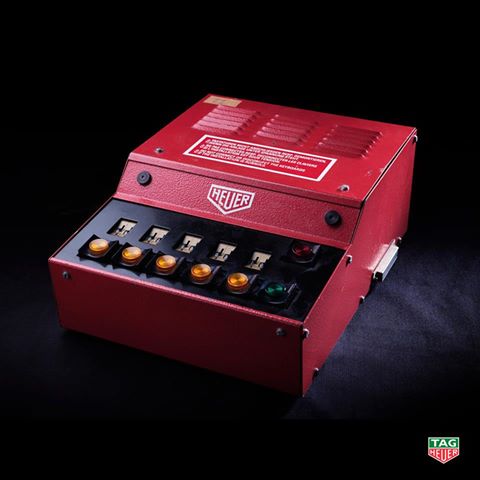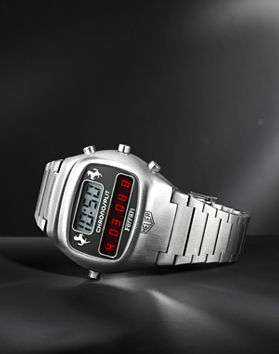Tag Heuer and the 1/1.000th of a second, key to the Ferrari F1 team success in the Seventies
Some F1 teams seem to dominate a whole era. That’s what Ferrari achieved in the 1970s. They were determined, they were dynamic, and they scooped up a total of seven Formula 1 World Championship titles. Throughout the decade TAG Heuer were their personal, in-house timekeepers, and also sponsored the whole team.
The performance you cheer on a Grand Prix circuit doesn’t happen by magic. Behind it lie gruelling weeks and months of practice. Drivers must constantly push themselves to improve on their best. In 1971, on their private test track at Fiorano, the Ferrari team were training hard. The problem was, in those pre-computer days no equipment was accurate enough to record the split-second timings they needed to ratchet up their performance.
To meet that need, TAG Heuer engineers devised the electronic ‘Le Mans Centigraph’. Thanks to it, Ferrari were able to record timings to within a 1/1,000th of a second. Practice makes perfect, and the mouldbreaking technology paid off with F1 World Champion titles for drivers Niki Lauda and Jody Scheckter in 1975, 1977 and 1979, and Constructors titles in 1975-77 and 1979.

TAG Heuer’s next leap forward was to build that 1/1,000th of a second technology into a chronograph. That’s how the ‘Chronosplit’ was born: the world’s first quartz wrist chronograph equipped with a double digital display. Its fusion of glamour and hi-tech appealed so much to Enzo Ferrari, founder of the company, that he ordered a limited edition of fifteen, embellished with the famous prancing horse logo.

From the “Le-Mans Centigraph”, several instruments were developed in the following years in order to timing 1/100ths, 1/1,000ths, and 1/10,000ths for motor racing. TAG Heuer’s pioneering precision has put the watch brand at the forefront of Formula 1: Tag Heuer was us official timekeeper on the most prestigious circuits for the world’s top-performing teams.
For eleven consecutive seasons from 1992 TAG Heuer was official timekeeper for the F1 World Championships. Just to give some figures: 18 tons of equipment; 20 kilometers of wiring; 19 antennas embedded in the track; 20 technicians monitoring 20 cars simultaneously through 150 on-site monitors. And those pioneering techniques made sure that in over 175 Grand Prix races not a single time was contested or corrected.































